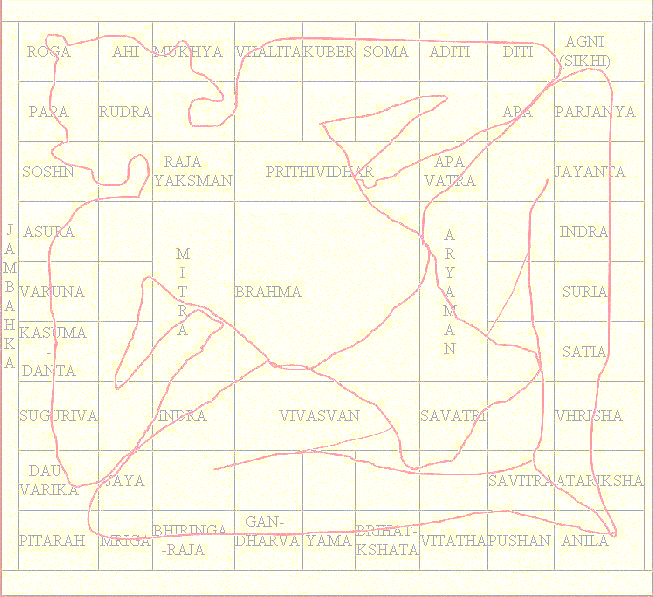 |
 |
 |
| |
|
|
| |
 |
|
| |
|
|
| |
|
|
| |
|
|
| |
|
|
| |
|
| |
|
| |
|
| |
|
| |
|
| |
|
| |
|
| |
|
| |
Overflowed links or list |
|
| |
We are for the community, some slogan |
|
| |
|
|
| |
|
|
| |
copy right @frontiersoft.inc |
| |
| |
|
Previous |
|
| |
|
Vastu is a Sanskrit word and derived
from a cosmic concept commonly known as "Vastu Purusa Mandala".
- As a term, Vastu represents an
establishment that could be a nation, country or a regular
household.
- As an environment, Vastu can be
defined as the first conscious object being composed of five
interactive elements, namely, Vayu (air), Agni (fire), Jal
(water), Bhumi (earth) and Aakasha (space), which are known as the
Panchabhutas.
- As a phenomenon, Vastu science
is founded upon the laws of nature and represents a resultant of
bio-energy form of two forces like: positive & negative, yin &
yang or light & dark. A harmony is always accomplished through
this phenomenon, this resultant becomes soothing and supportive to
the living being.
- As a religious angle, Vastu
Purusa, a demon, was originated from a drop of Lord Shiva's sweat
to ravage the world. To encounter this ravager, all the gods
collectively balance out this ravager thus bringing order and
peace where there is disorder. Each of the gods have been assigned
a specific position, with Brahma occupying the center and 32
deities placed in the peripheral squares according to their
importance.
- The Mandala is a cosmic
embody of the subjugated Purusa and shows him with his head
towards the north-east and his feet towards the south-west.
|
|
|
| |
|
 |
|
|
| |
|
© Created by Arindam
Mukherjee, 8th Grade.
© FrontierSoft.Inc | |